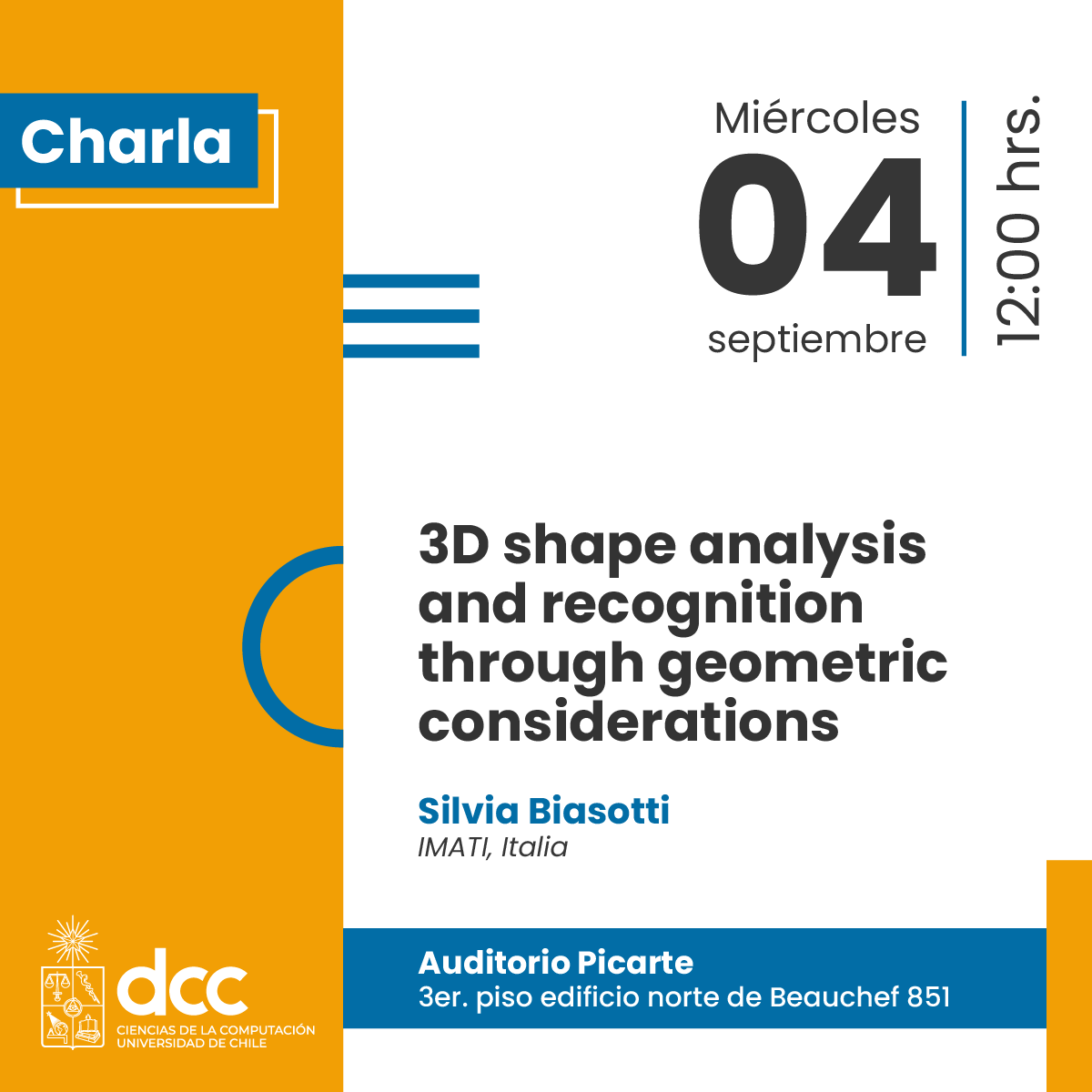Abstract: Shape analysis may be defined as a set of theories, methods and algorithms that support the formalization and computation of attributes helpful to characterize the objects' appearance. With time, computer graphics began to tackle the same fundamental problems that computer vision was focusing on, such as shape identification, segmentation, and comprehension. Yet, new techniques had to be developed, as 3D models differ from 2D images. For instance, objects represented by 3D models can be analyzed relying on a complete digital model of their shape, and therefore it is possible to evaluate them not only using local low-level features but also global high-level geometric and topological properties. Nowadays, 3D shape analysis tackles an increasing amount of difficult problems, ranging from the analysis of single to complex shapes to the reasoning behind the content of vast data collections. In this talk, I present my findings on shape analysis and similarity reasoning and outline some of the research lines and projects currently underway.
Short-Bio: Silvia Biasotti is a Research Director at CNR-IMATI. She graduated in Mathematics in 1998, got a PhD in Mathematics & Applications in 2004 and a PhD in ICT in 2008, all from the Univ. of Genoa, Italy.
Her research interests span geometric modelling, shape analysis, computational topology, 3D object retrieval and surface pattern recognition. She is also involved in the creation of benchmarks for 3D object retrieval, recognition and geospatial data analysis. She authored more than 150 reviewed papers in scientific journals and international conferences and is an associate editor of international journals in Computer Graphics (currently, Computer Graphics Forum, Computers&Graphics and Graphical Models). She actively works as chair of conferences and workshops and is a member of the steering committee of Shape Modeling International and the EG Symposiums on 3D Object Retrieval. In 2024 she was nominated Fellow of the Eurographics Association.
Silvia Biascotti es investigadora nvitada en el marco del proyecto de investigación Foncecyt Iniciación N° 11220211, del profesor Iván Sipirán.
--
Comunicaciones DCC
